Technical Report 2009-05-08
Content shown in the technical articles are the sole opinion and views of the authors or companies, which are not necessarily congruent to opinion and views of the editors.
|
From really large to really small Jörg Töpfer, WEIMA Maschinenbau GmbH Graf Plastics GmbH produces large volume Carat brand underground tanks for rainwater collection (photo 2) at its Teningen location (photo 1). Surplus production material arises during production of the up to 6,500 litres large containers and this is shredded in a single step into ground material with a WEIMA WLK 30 Super-Jumbo single-shaft shredder from WEIMA Maschinenbau GmbH, Ilsfeld. 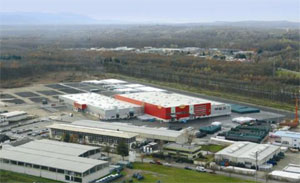 Photo 1: Graf location in Teningen Rainwater use increasingly economic Use of rainwater for WCs, washing machines or garden irrigation can help to save both valuable potable water and expensive wastewater charges. Continuous cost increases here in the past years has led to extremely high worldwide growth in demand for containers to collect and store rainwater - irrespective of whether these are installed above or below ground. Filters installed in the entire system enable 100% yield. In this way it is possible for a household to save up to 50 percent of potable water consumption. Clear advantages for plastic over concrete 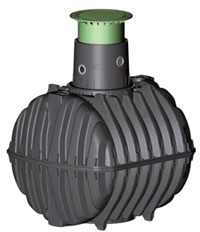 Photo 2: Carat tank with telescopic dome-shaped shaft cover capable of withstanding walking pressure Compared with concrete tanks, tanks in plastic can be installed without a crane up to a volume capacity of approx. 6,500 litres, on account of their much lower weight, as the corresponding handling costs are eliminated. Produced in the form of clamshell halves and stapled on palettes for favourable transport logistics, the tanks can also be exported cost-effectively, with finally assembly taking place locally at the point of installation. Graf Plastics has stated up operation in October 2006 of one of the worldwide largest two-platen injection moulding machines with clamping force of 5,500 tonnes that can process approx. 150 kg of material in one shot. The two halves of the tanks are moulded with this machine and welded together to form a statically optimised tank shape. The tanks produced (photo 2) are therefore permanently watertight and designed so that they can be installed entirely underground. Smooth tank inner surfaces prevent build-up of contamination, thereby enabling high water quality and simultaneously easy tank cleaning. The tanks offered have extremely long life and can be recycled after use. Central grinding to ensure optimum quality 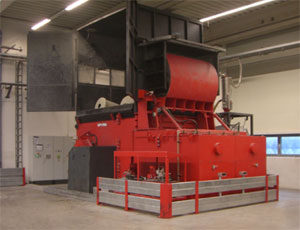 Photo 3: WLK 30 Super-Jumbo single-shaft shredder The company grants a 25-year guarantee on its tanks. This is possible though optimised production processes and extensive quality management, whereby constant high product quality can be guaranteed. Each individual tank is checked for correct dimensions, wall thicknesses and weight. Products, which do not meet the high quality demands, are diverted and brought to a central processing system. These containers are collected in a section of one of the usual production halls and passed as required to a WLK 30 Super-Jumbo single-shaft shredder (photo 3) that is installed there.
Adaptation of the shredding machine to specific tasks The machine is fitted with a completely closable hopper above the machine housing. On one side, two opening doors enable opening of the machine and thereby access to the rotor. Feeding of the material in the form of complete tanks or a number of clamshell halves takes pace via this opening by means of a forklift truck. For safety reasons, the machine only runs when the doors and therefore also the hopper access are completely closed. In contrast to the conventional design, the material being shredded, held in an extended cutting area, is shredded between the rotor and stator blades with the aid of a raised slide, mounted horizontally in the machine and controlled depending on the load involved, pressing against the rotor, that is also mounted horizontally. The slide is fitted with a toothed strip plate (photo 4) to optimally seize what is generally large volume material and that passes over the segmented machine base to guarantee optimal slide guidance. 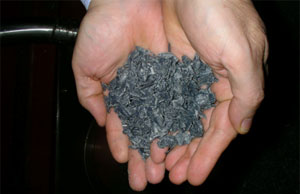 Photo 5: Ground material with particle size of approx. 8-10 mm  Photo 4: Toothed strip plate on horizontally arranged slide Hydraulically driven low-pressure equipment situated to one side above the slide additionally presses the material vertically from the top downwards, so that dancing of the very bulky tanks on the rotor is prevented. The shredded material is delivered through a screen with 10 mm perforations located underneath the rotor. Ground material with low dust content and with particle size of approx. 8-10 mm is obtained (photo 5). Fast cleaning and ease of maintenance 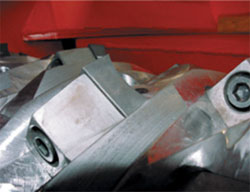 Photo 6: Profiled V-Rotor with reversible crown blades with edge length of 60 mm x 60 mm that can be reversed a number of times Installed on a vibration absorbent foundation, the single-shaft shredder is fitted with a profiled, universally usable V-rotor produced out of solid metal (photo 6) with rotor length of 3,000 mm and rotor diameter of 600 mm. The drive power rating of the approx. 36 tonnes heavy machine amounts to 2 x 90 kW. A hydraulic swivelling screen cage holds the screen, so that fast access to the rotor and thereby enabling fast and complete cleaning of the machine, as is performed when changing material. The edge length of the reversible crown blades, that can be reversed a number of times, amounts to 60 mm x 60 mm. Blade replacement takes place when the dust content increases or when throughput is observed to have fallen. <ü>The size of the shredding machine is determined by the size of the containers to be shredded. The throughput obtained is of lesser importance. Production of the tanks takes place around the clock on 365 days in the year in 3-shift operation, whereby the machine's full recycling capacity is naturally only utilised to an extremely low degree.Quotation from Gerd Berkenkamp, Plant Manager: "WEIMA Maschinenbau GmbH has presented a convincing concept with an acceptable price/performance ratio. An important criterion was additionally a reasonable delivery time. The close geographic proximity of both companies enables rapid intervention when service is required". About Graf Plastics Graf Plastics GmbH has been producing high-grade plastic products for more than 45 years. Primarily plastic products for vineyard use were produced initially. But composting and industrial containers have enabled continual growth. The company developed products for rainwater use for the first time in 1974, an area in which it is considered today to be one of the largest producers worldwide. Graf presently gives employment to around 250 employees in its two locations of Teningen in the Baden region of Germany and Dachstein in the Alsatian region of France. WEIMA Maschinenbau GmbH Bustadt 6-10 Phone: +49 (0) 7062 9570-0 Internet: weima.com |
 back to the list back to the list |  back to top back to top |



